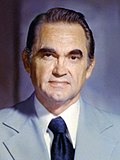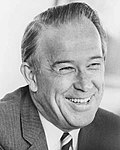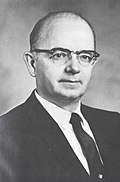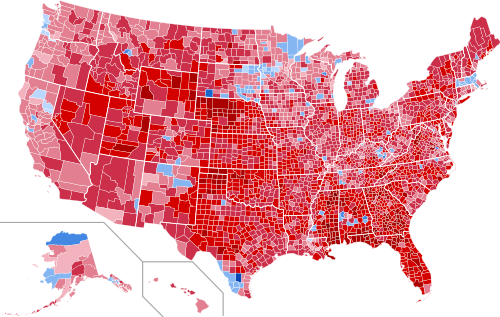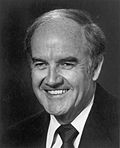| |||||||||||||||||||||||||||||
538 members of the Electoral College 270 electoral votes needed to win | |||||||||||||||||||||||||||||
|---|---|---|---|---|---|---|---|---|---|---|---|---|---|---|---|---|---|---|---|---|---|---|---|---|---|---|---|---|---|
| Opinion polls | |||||||||||||||||||||||||||||
| Turnout | 56.2% [1] | ||||||||||||||||||||||||||||
| |||||||||||||||||||||||||||||
 Presidential election results map. Red denotes states won by Nixon/Agnew and blue denotes those won by McGovern/Shriver. Gold represents the sole electoral vote for Hospers/Nathan by a Virginia faithless elector. Numbers indicate electoral votes cast by each state and the District of Columbia. | |||||||||||||||||||||||||||||
| |||||||||||||||||||||||||||||
| Watergate scandal |
|---|
 |
| Events |
| People |
Presidential elections were held in the United States on November 7, 1972. Incumbent Republican President Richard Nixon and his running mate, incumbent Vice President Spiro Agnew, were elected to a second term in a landslide. They defeated the Democratic ticket of Senator George McGovern and former ambassador Sargent Shriver. With 60.7% of the popular vote, Nixon won the largest share of the popular vote for the Republican Party in any presidential election.
Contents
- Republican nomination
- Primaries
- Primary results
- Convention
- Democratic nomination
- Primaries 2
- Primary results 2
- Notable endorsements
- 1972 Democratic National Convention
- Vice presidential vote
- Third parties
- General election
- Polling aggregation
- Polling
- Campaign
- Results
- Results by state
- Close states
- Voter demographics
- Aftermath
- See also
- Explanatory notes
- Citations
- Bibliography and further reading
- Primary sources
- External links
Nixon swept aside challenges from two Republican representatives in the Republican primaries to win renomination. McGovern, who had played a significant role in changing the Democratic nomination system after the 1968 U.S. presidential election, mobilized the anti-Vietnam War movement and other liberal supporters to win the Democratic nomination. Among the candidates he defeated were early front-runner Edmund Muskie, 1968 nominee Hubert Humphrey, governor George Wallace, and representative Shirley Chisholm.
Nixon emphasized the strong economy and his success in foreign affairs, while McGovern ran on a platform calling for an immediate end to the Vietnam War and the institution of a guaranteed minimum income. Nixon maintained a large lead in polling. McGovern's general election campaign was damaged by the perception that his platform was radical, and by revelations that his initial running mate, Thomas Eagleton, had undergone electroconvulsive therapy as a treatment for depression; Eagleton was replaced by Sargent Shriver after only nineteen days on the ticket. In June, Nixon's reelection committee broke into the Watergate complex to wiretap the Democratic National Committee's headquarters; early news of the incident had little impact on the success of Nixon's campaign, but further damaging revelations in the ensuing Watergate scandal soon engulfed his second term.
Nixon won the election in a landslide victory, taking 60.7% of the popular vote, carrying 49 states and becoming the first Republican to sweep the South, whereas McGovern took just 37.5% of the popular vote. This marked the most recent time that the Republican nominee carried Minnesota in a presidential election; it also made Nixon the only two-term vice president to be elected president twice. The 1972 election was the first since the ratification of the 26th Amendment, which lowered the voting age from 21 to 18, further expanding the electorate.











